How do you find the source of a rain leak?
Finding water leaks in our home or building is quite easy. You just need to know where to look. In this article, we’ll show you in 3 steps how to locate a rain leaking in your home.
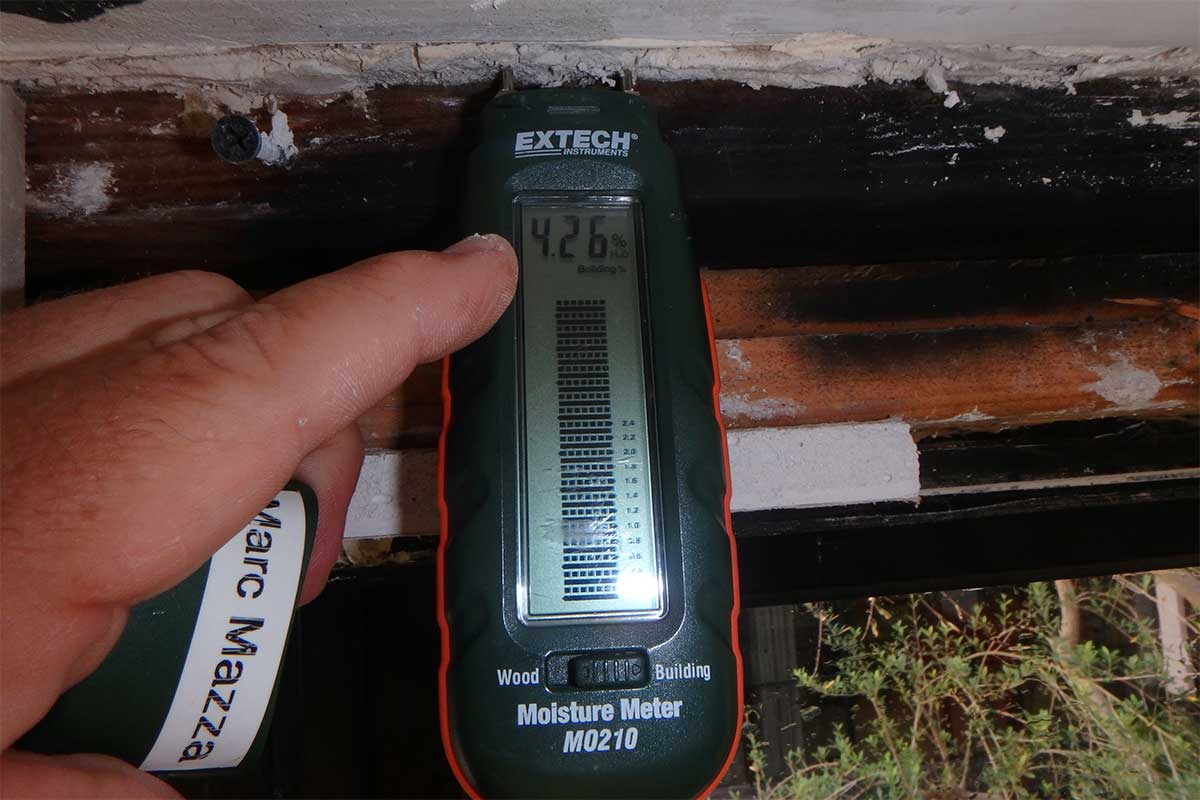
A few tools you may need to locate water intrusion within a home or building.
- Moisture meter
- Infrared camera rental from Home Depot
- Masking or blue tape
- A water hose with a very light sprayer nozzle
3 steps to help find a rain leak in your home or business
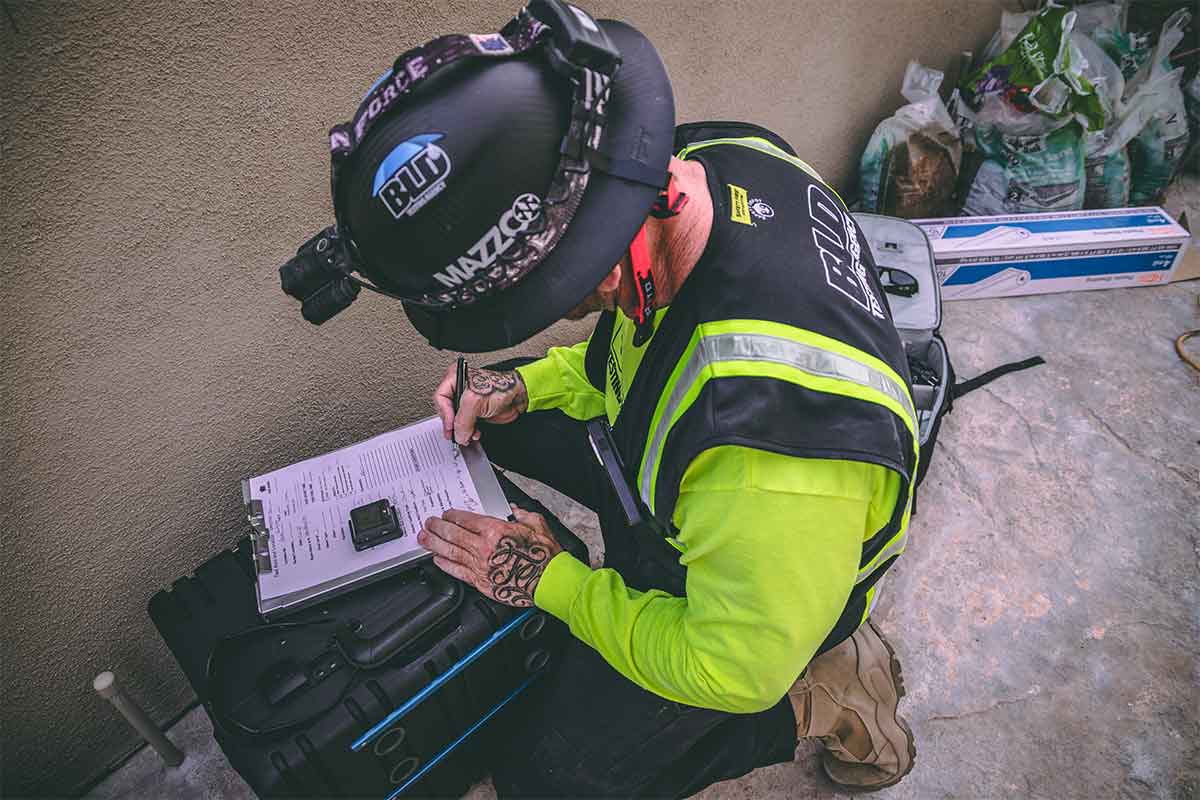
#1 Document the water intrusion
So how do you find the rain leak source? The first thing to keep in mind is that a water leak is essentially a vulnerable location within your buildings envelope such as deteriorated sealant, damaged building paper, improperly installed building components or just plain age and deterioration.
Nevertheless, Here are 3 easy to follow steps we use to locate and inspect for water leaking into your home or business.
Before we start looking for the source of the water intrusion, you’ll wanna do is document the rain leak event. With that, what I mean is you will want to write down a list of items and take plenty of images during the rain event.
- Let’s include the time that you first notice rain. Document to the best of your ability, the strength of the rain or how hard it’s raining or in others words… heavy rain.
- Document how long it took from the start of the rain event to the time you first see the water intrusion enter the building. Is it from the ceiling? Do you have wet walls? Are water drips coming from a window?
- Make sure you describe the type of leaking.. is it slow dripping water? If so, how many seconds between drips? Or is it a constant stream of water? Is there standing water?
- Is there wind? If so what direction in relation to your home or office?
- For water intrusion leaks are there water stains?
#2 Locate water leaks in your home with water intrusion testing
Armed with the knowledge of the important rain even facts you documented while it was raining and while your building was leaking… after the rain has subsided and the area is dry, you will want to start moisture intrusion testing.
Take your water hose and sprayer and start from the bottom of the area that is suspected and move our way upward trying to make your way to the top. Test an area of about 3’x3′ for about 5 minutes and then stop for a minute. Then proceed to the next level upwards until you get to the end or top of whatever you’re testing.
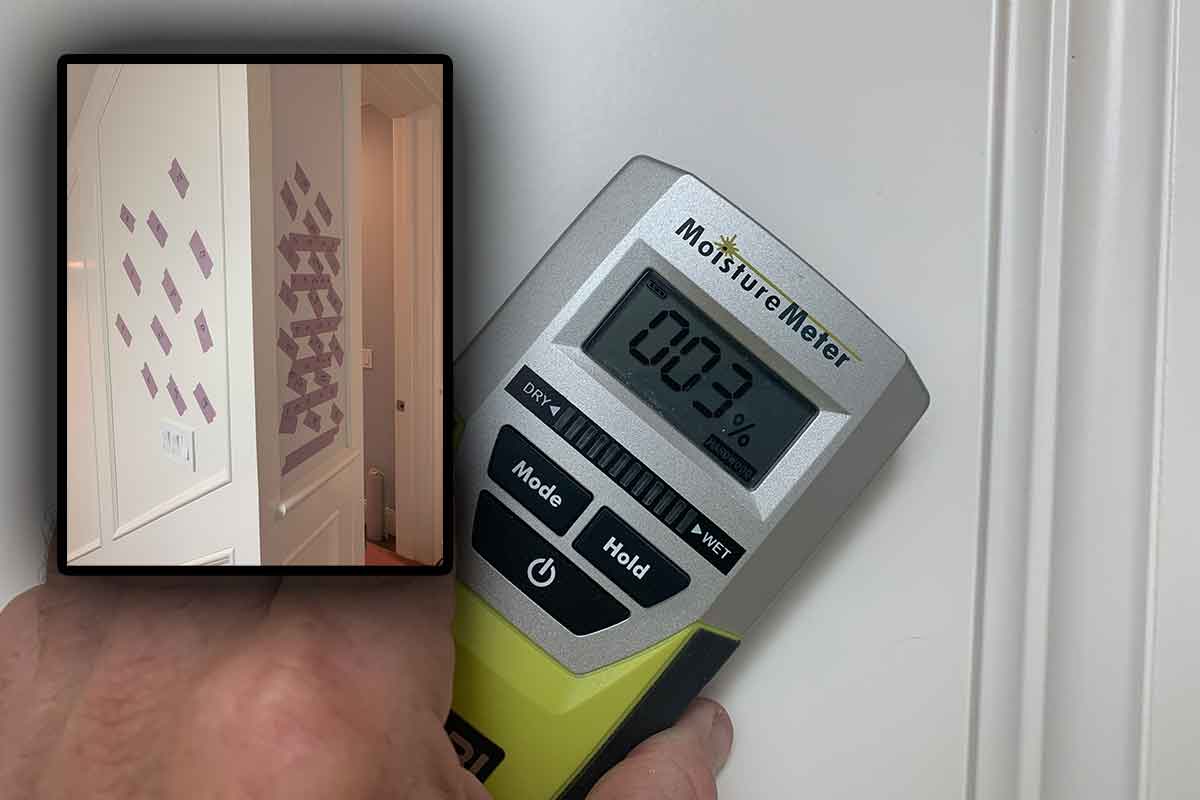
Obtain a moisture meter for moisture mapping the rain leak
A moisture meter will inspect for water leaks within your buildings and is very reliable for determining the exact location of the source of the leak. With masking or blue tape, locate the area where you observed visible signs of water leaking.
For moisture mapping, first apply strips of tale across the length of the area like a wall or ceiling. With your moisture meter move the meter from left to the right starting at the top (if it’s a wall for example). Write down the meters measurement numbers and write it down on the tape every 6″ across the tape line. When the meter detects moisture, write that down too…
Do this all the way to the bottom of whatever surface youre inspecting.
#3 Find the source of water intrusion with an infrared camera
The use of thermography is a fantastic way to locate moisture in surfaces where destructive testing is not an option. You can rent these from Home Depot. The use of thermograpy for moisture intrusion is easy. Just point the camera towards the area (while applying water to the surface) and loof for differences in temperatures by way of changing colors.

Thermography for leaks in Los Angeles
An infrared camera is a tool we as water intrusion specialists use to detect water leaks. It doesn’t take a professional thermographer to operate these infrared camera when it comes to water intrusion. they are quite easy to operate, honestly.
Deck Leak Testing In Los Angeles
For decks that leak, the test for these are simple. In fact, there is a specific test, the ASTM 5957 is designed specifically for testing rain leaks in decks. The idea for this test is to essentially flood the deck, but no more than just an inch or so and keep the water on the deck for 24 hours.
You can do this by creating barriers around the perimeter of the decks surface and plugging the drain. Afterwhich, or, until you see telltale signs of water damage or rain leaks.
If I were testing your deck, i’d grab the infrared camera and moisture meter and use both of these tools to map the area under the deck for wall damage, running water or other signs of water intrusion.
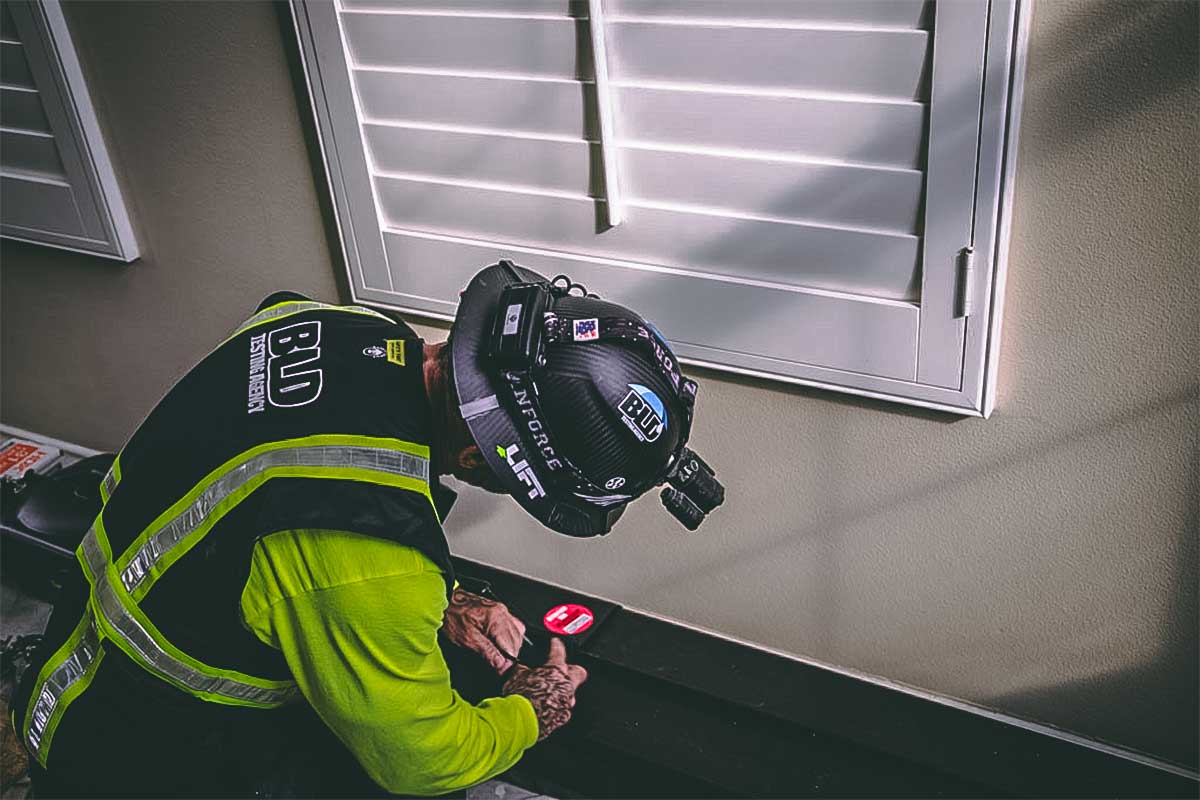
Stucco Wall Leaks in Los Angeles Homes
Its interesting how a system like a stucco wall can leak during rain. I mean, it’s a solid object made of cement and one would think it’s water proof, right? Not exactly. A stucco wall absorbs water just like a sponge does.
Once the stucco wall is saturated, the rain water will continue to enter the building until it hits a building paper material. Once it makes contact with this material it runs all the way down the paper until it either exits through a weep screed or, stays inside the wall.
Stucco rain leaks occur when there are cracks in the stucco that penetrate the paper membrane, or the paper membrane is not properly installed, or the paper membrane is not installed at all.
Stucco wall leak testing in 3 steps
Stucco wall testing is the only way, short to damaging the stucco wall, to locate water intrusion. Additionally, the best way to test a stucco wall is with the use of a light sprayer or by a professional water intrusion specialists like Building Leak Detection Company in Los Angeles.
-
- Cover the stucco wall in the area through to leak with plastic strips 24″ wide , laterally across the wall
- Start with the light sprayer and spray the area for 15 minutes then check the interior for wet areas or leaking
- After 15 minutes of stucco all leak testing, providing you didn’t find the rain leak, pull the plastic strip off and move up the wall another 24″.
- Repeat this process until you locate the rain leak in your stucco wall.
Window Leak Detection Los Angeles
As we know, living in Los Angeles we don’t get to see too much rain. That can be both a good thing and a bad thing… It’s good if you like to run, cycle, and just be outdoors for the better part of your day.
On the other hand, not having rain, we forget that buildings tend to age. And here in Los Angeles, they seem to age quite drastically, and with the excessively dry climate and heat. So when it finally rains, and it will… rain leaks happen.
Rain leaks here in Los Angeles are unfortunately typical, especially for older or aging homes. I mean, you have walls made of stucco which is vulnerable, roofs made of tile and composition, and windows and decks that will all leak during the rain once the materials have dried enough to see the sealants and other waterproofing materials to dry, crack and now you have the perfect conditions for a water leak.
How do I find a water leak in my window?
For windows, water intrusion comes from one of two places. The window product or the windows installation. How do you tell which it is? The easiest way to determine the location of the rain leak is to remove the inner wall covering prior to water intrusion testing. If you cant remove any interior wall covering, then i’d recommend using a thermal imager and moister meter to locate the rain leak intrusion.
Window rain leak testing can be achieved in 2 easy steps.
The first step in rain leak testing a window is to rule out the installation vs the product. We do this by covering the entire window very, very tightly with thick plastic. Afterwhich, the area is sprayed with water for about 5 minutes and observed from the interior.
If there was no leaking from test one… the second step is to test the window product. We do this by removing th plastic from the window and testing the entire window assembly for about 5 minutes.,/p>
What does a water intrusion specialist do?
Our main goal as Water Intrusion Specialists is to conduct water intrusion testing for both commercial and residential properties in order to locate and determine the cause of water leaks. We use professional testing standards to administer water intrusion teests to decks, windows, walls, roofs and more.
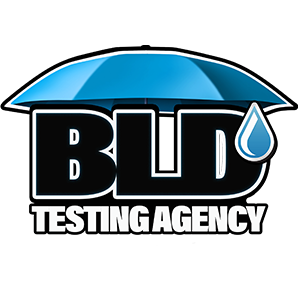
Telephone No.661-904-1895

